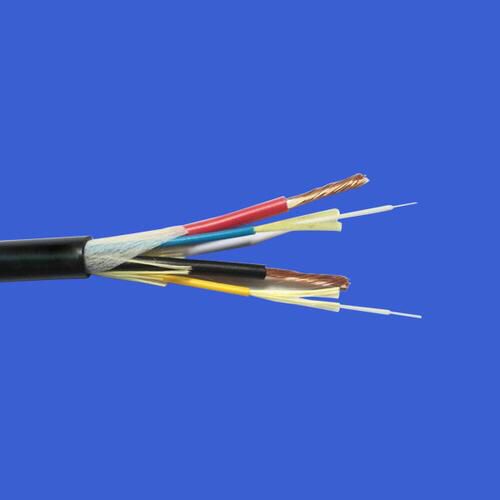In the past 2022, with a series of policies, the optical communication industry, as the basis of the network, has achieved great development. China has built the world's largest and most complete optical communication industry system, and some key technologies such as optical communication equipment, optical module components, optical fiber and cable have reached international advanced levels. A number of global leaders have emerged, with Chinese companies such as Huawei, ZTE, Fiberhome, accounting for almost half of the global market share of optical equipment. What trends will the optical communication industry show in 2023 ? DFTELECOM recently released ten predictions of optical communication or can provide some development ideas for the industry.
Trend 1: Mainline 400G ushered in the first year of commercial use, and is expected to grow in scale in 2023. 400G will become a big platform of optical network in the next ten years, just like 100G, it will rule a new era of optical communication. In 2023, the 400G long distance technology will come from behind the scenes to the stage, and gradually commercialized. The mainstream PM QPSK (128Gbaud) and 16QAM (107Gbaud) schemes have their own strengths, which will present a duopoly pattern, and will be integrated and unified in the future.
Trend 2: Further development of all-optical network, OXC (optical cross connection) evolution to a higher dimension All-optical network is the focus of building a network power, OXC is the development core of all-optical network. In order to cope with the continuous expansion of node scale, the backbone node of the network is upgraded from the traditional ROADM to OXC, the WSS dimension will evolve to more than 32 dimensions and higher dimensions, and the miniaturized OXC devices of metropolitan network will be further popularized.
Trend 3: The continuous optimization of new optical fiber, long distance transmission advantage is highlighted, new optical fiber will greatly release the potential of 400G transmission system. The ultra-low loss G.654.E fiber can significantly improve the ultra-high speed and long distance transmission performance of 400G bit/s and above, and the commercial scale will be further expanded in 2023. New technologies such as hollow fiber and multi-mode fiber continue to emerge, continuously improving the transmission performance of optical communication.
Trend 4: C+L extended transmission is about to be commercialized, and multi-band, SDM and other technologies become the next research hotspot. It has become a consensus in the industry to use C+L band extended to improve the single-fiber capacity of 400G transmission system. In 2023, the expansion of C+L band will move from pilot to commercial, driving the upgrading of optical device technology in the upstream industry chain. In the future, the increase of the single-fiber capacity of WDM systems with higher rates above 800Gbit/s and 1Tbit/s will promote the research of S+C+L multi-band, space division multiplexing and other new technologies.
Trend 5: Driven by the need for low latency and certainty in all-optical networks, OSU and SPN small-particle solutions go hand in hand to build low-delay, deterministic all-optical networks through OSU and SPN slices, which will become the source of network differentiation and high commercial value. The two technologies take delay as an important optimization objective, provide Megabyte level refined dynamic bandwidth lossless adjustment, realize flexible access to multiple services and hard isolation protection, and advance in the carrier-dedicated line service bearing and industry promotion and application.
Trend 6: Network nodes are becoming intensive, and the integration degree is evolving from devices to systems. The evolution of silicon optical and semiconductor packaging technology will promote the overall device integration degree to evolve from devices to systems. The growth of single-wave rate and system capacity promotes the intensive development of network node service access and cross-scheduling, and the popularization and application of silicon optical integration, CPO and 3D co-packaging technologies, which promotes the evolution of smaller packages of core chips and optical modules and the continuous improvement of energy consumption ratio.
Trend 7: Collaborative management and control is an effective means to realize open decoupling of operator networks. Neither short-term benefits nor long-term values should be overestimated for open decoupling. For operator networks with complex scenarios and huge inventory, the whole life cycle TCO should be considered. In the field of management and control, it is an effective means to realize the network capability and value opening of operators by standardizing northbound and SC-DC integration.
Trend 8: Digital twinning promotes the evolution of traditional optical network to smart optical network. Digital twinning and traditional optical network technology cross and merge, is the inevitable trend of intelligent and digital evolution. The application of optical fiber sensing, optical layer digitization and other technologies realizes the accurate perception and image simulation prediction of the internal and external environment state of optical network, which is conducive to improving the ability and efficiency of planning, construction, maintenance and optimization of the whole life cycle.
Trend 9: The all-optical network has obvious advantages in low power consumption, and three ways to support green sustainable development, energy conservation and emission reduction are the general trend. The all-optical network needs to deepen the low-carbon development path. The all-optical network represented by the three typical application scenarios of all-optical access, all-optical transmission and all-optical switching has outstanding energy-saving and consumption reduction effect compared with the traditional signal processing in the electrical domain. The three paths of chip process upgrading, device packaging technology improvement and system energy saving and consumption reduction will ensure that the green and low-carbon advantage of all-optical network will continue to take the lead.
Trend 10: The importance of network security has become prominent, and the construction of comprehensive security system of optical network Optical network security technology needs continuous improvement, and the construction of multiple security guarantee. Optical network needs to carry out continuous theoretical research, innovation and practice verification from the five dimensions of optical fiber link, network element equipment, network architecture, control system and supply chain localization, and strive for perfection to build a comprehensive security system.






